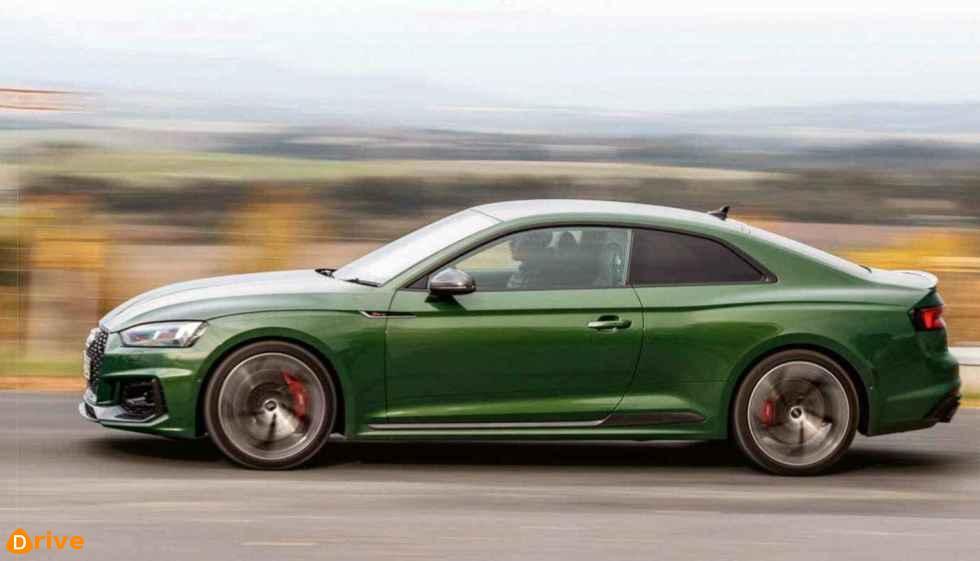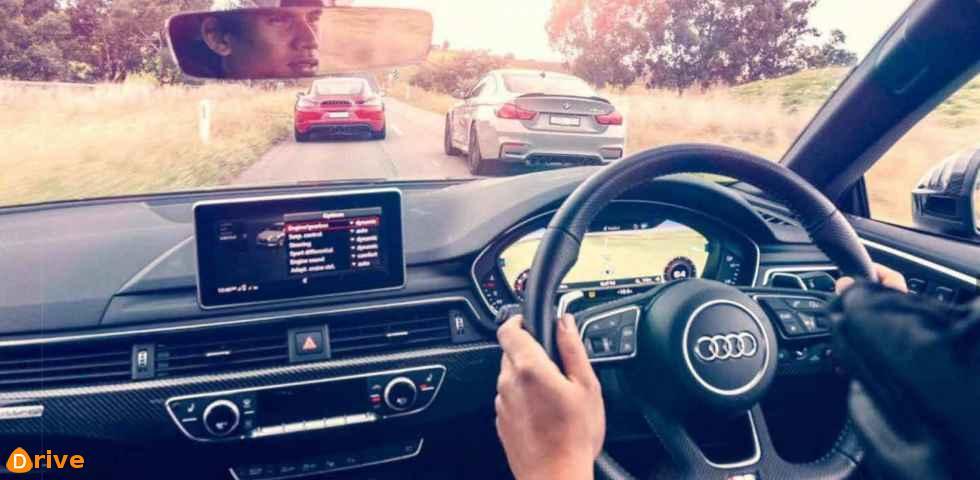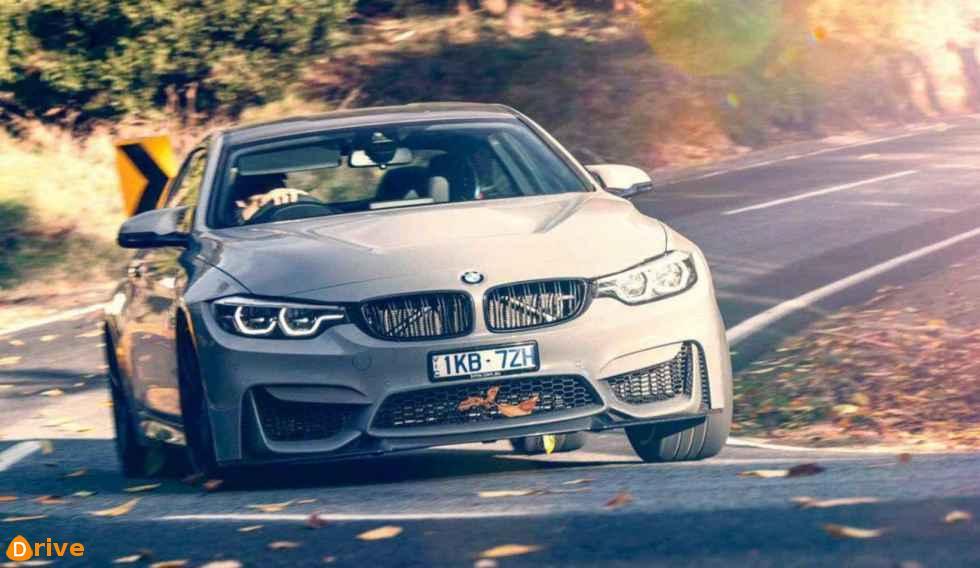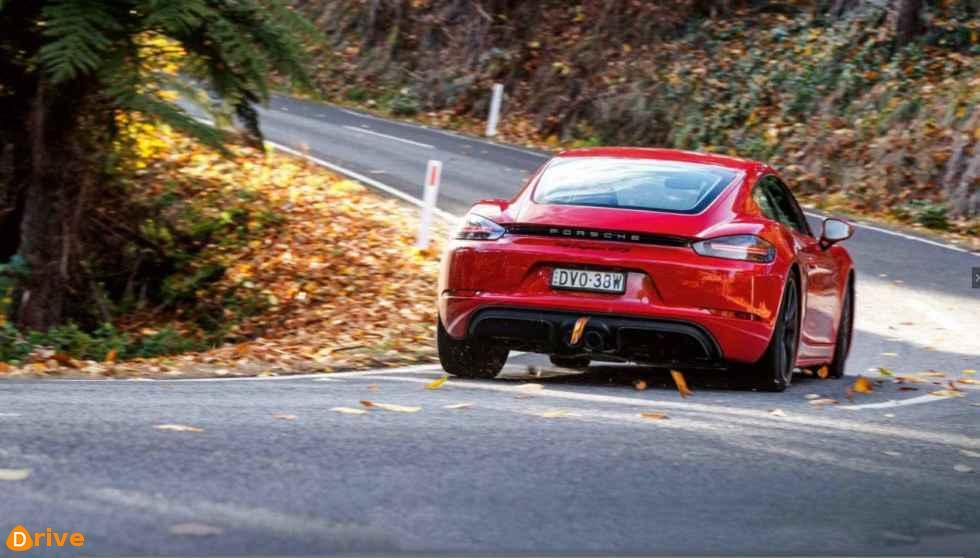
Germany’s uber coupes have succumbed to boost, but can they still pull at your heartstrings?
TURBO TEUTONS
TURBOCHARGERS MIGHT be shaped like snails, but they’re disrupting the performance-car world with the force of a cyclone. As they boost engine outputs to new highs and compress emissions to planet-saving lows, they’re also sucking the soul out of icons once worshipped for their atmo hearts. Porsche, BMW, Audi – some of Germany’s most revered brands have failed to convince us the change is for the better, especially when it comes to their sharpest sports cars priced under Two Hundred Large.
When Porsche last updated the Cayman, it borrowed the turbo 911’s engine block, lopped off two cylinders, and bolted the remaining four into the two-seat coupe. More power and torque injected it with the courage to take on its big brother, but the absence of a wailing flat-six was sorely felt by your ears. It was clear charisma sacrificed for the gain in performance. That was a few years ago and Porsche has since sharpened the renamed ‘718’ Cayman for a GTS version. At $179K, it commands almost $30K more than an S variant, but our hopes rest on the fact engineers have used the GTS to enhance this model’s best traits. The treatment begins with extra power. Its variable vane turbo exhales a little more boost, adding 12kW to its flat 2.5-litre four.
Meanwhile its standard Sport Chrono pack bumps torque by 10N m when you option the seven-speed PDK, helping our tester belt out 267kW and 430Nm of boxer burble through its standard-fit sports exhaust. Over in Ingolstadt Audi has also been scratching its head trying to figure out how to unlock the magic in turbocharging. The new RS5 swaps out the old screaming 4.2-litreV8 for aV6, a Porsche-developed unit that nestles two turbos within its valley, just like the V8 in an RS6 Avant Performance. Ourtestcar is in a curious, deep Sonoma Green.
On paper, its displacement drops 1.3 litres, to 2.9 litres in total, while its rev limit tumbles from 8250rpm to 6750. Power plateaus at 331kW, but torque swells by 170Nm. So 600Nm drives its four wheels to 100km/h from rest in a claimed 3.9sec, two tenths faster than the Cayman’s claimed 4.1. It offers the speed for much cheaper, too, with the auto-only RS5 starting from $156K. The BMW M4 has wrestled with forced induction for a much longer time.The current turbocharged version arrived in 2014 as a huge surprise after its V8 predecessor.
And although it added serious speed into the car’s package, the power’s sudden delivery and the suspension’s inability to cope made it intimidating. But Munich’s engineers slaved to fix the M4’s relationship with boost, and delivered the honeymoon phase with the arrival of the CS. Pegged somewhere between the M4 Competition and rawas-bones GTS, the CS extracts 338kW (up 7kW) and 600Nm (plus 50Nm) from its tweaked 3.0-litre twin-turbo six. It’s claimed to do 0-100km/h as fast as the Audi with two-wheel drive, so you know it’s potent.
BMW was so proud of the result itinitially released the M4 CS at $210K, but quickly lowered it to a more palatable $190K. As well as spending more time under the squat rack, the CS has also undertaken singing lessons. Fire it up and the titanium exhaust crackles on over run, as if drops of fuel are igniting in the turbine. Under throttle, though, it almost sounds like half a McLaren F1 V12. The S55 now howls with an atmo-like crispness that breaks into a scintillating, yet guttural, rasp as it spins towards a 7500rpm rev limit.
Things are less orchestral in the RS5. Since it doesn’t share an engine with an R8 supercar anymore, its 2.9-litre V6 has disowned the old car’s musical legacy and decided on a muted, bassy soundtrack. The undersquare block whirs with a hightech buzz that gains character as the revs climb, but at redline it sounds muffled, as if it’s afraid to brag about how strong it is. It’s matched to an eight-speed torque converter, and although it is slower than the other dual-clutch gearboxes, it pushes a deep belch from the RS5’s oval tips on upshift.
Comparisons between the 718 Cayman GTS’s note and any Subaru WRX’s are inevitable. It throbs on idle, ticks with a Porsche-like clatter, and roars like its wastegate is open. But the noise thrummed into the cabin is so similar to a BRZ’s you’ll quickly drop the windows to drown it with the exhaust system’s tasty crackles and turbo hiss. You’ll forget about that when the 718’s engine starts puffing, though, as you’ll arrive where you’re going fast. It makes 17kW and 50Nm more than the old Cayman GTS, which hints at the flexibility on offer.
Turbo lag is minimised by turbine fins that actively move to better catch exhaust gases, while the PDK is always ready to downshift. The Cayman’s tricky to launch because it unearths more grip than a gecko clinging to a rock. Between its mid-engine layout, grippy tyres, and low outputs, the Cayman needs huge revs (about 6000rpm) to help it lunge from a standstill. But that won’t release its rear tyres on Heathcote Park Raceway’s prepared surface. The 718 GTS bogs its first run, reaching 100km/h in 4.35sec and 400m in 12.4sec. A gravelly surface helps it slingshot forward at furious speed.
The PDK shifts up to keep the engine in its mid-range, as the GTS winds out to 7500rpm and charges forward to triple figures in 3.94sec and 400 metres in 12.04sec. It could go faster, but it works with such efficiency we’re convinced it does the best it can with what it’s given. For now, though, the surprise is how the RS5 delivers supercar-scaring figures in any environment. Load up the torque converter and it fires out of the hole faster than the Cayman, nudging ahead until short gearing forces an upshift at 53km/h, then 84km/h, to hand an small lead back to the Porsche.
They’re neck and neck as the Audi passes through triple figures at 3.96sec then the timing beam at 12.04sec – an identical figure to the Cayman despite lugging another 400kg. In complete contrast to them, trying to launch the M4 CS in damp conditions is like trying to lasso a rampant bull. Yes, the turbochargers now swell more discretely in the mid-range, but pregnant clouds and icy winds cool our Michelins faster than we can warm them. Since we can’t load its twin-clutch gear box on the brake, our only option is to spin through the first couple gears, while it bucks sideways down the drag strip.
With launch control, and a bit of tyre temp, times drop from 5.03sec to 100km/h and 12.88sec across 400m to 4.56sec and 12.45. But we stop there to preserve its oily bits, even though more launches would have zeroed in on the CS’s 4.05sec/12.01sec times at PCOTY 2018. As we switch Heathcote’s scenery for a place with roads more winding, a powered-up M4 should have us grasping rosary beads and begging the oversteer gods for mercy.The CS, however, sneaks more tyre width under its broadened guards.
It features retuned suspension, sits on staggered 19-inch and 20-inch wheel diameters, and drops it scentre of gravity with an M4 GTS carbon-fibre bonnet. They’re useless, like we learned at the drag strip, until you’ve warmed its Michelin Pilot Sport Cup 2s. Inconsistent when cold and frightening on damp surfaces, you awaken the Cup 2s by stringing corners together at half pace until the ESP stops blinking in third gear. If your confidence remains high then you’ll find this M4 properly engaging. Its dyno charts reveal it won’t vaporise the rear tyres on corner exit.
The regular M4’s torque peak (550Nm) appears about 500rpm higher, letting the rear tyres to dig in and push you to warp speed from corners. The M4 CS also shrinks around you like a morph suit. At a faster pace its firm damping irons out poor roads, controlling its big contact patches over lumps and keeping its weight in check. The steering’s largely unchanged, in that it feels wooden in anything but Comfort mode, but the front-end is devastatinglysharpandobeysyoureverycommand.Thespeed the M4 CS can carry through corners defies belief.
Porsche has tuned the Cayman’s chassis in a less inspired way. It’s simply added options available to the S, like adaptive damping, a lower ride height, and a torque-vectoring rear diff. Sure, that’s been the agenda with previous GTS models, and those Michelin Pilot Sport 4 S tyres are new, but for a line that’s meant to link Porsche’s road models to the GT cars with a platter of cherry-picked upgrades, the brand hasn’t gone to lengths here like it did on the 997.2 series 911 GTS. That said, it’s not like the Cayman’s handling has any fundamental issues to fix.
Swapping into the Porsche from the BMW is like changing the television channel from UFC to gymnastics. While the M4 bullies its way into corners on big, grippy tyres, the Porsche relies on momentum, balance, and its lowered stance to sustain pace from smaller contact patches. It drives with sophistication and grace, but never fails to remind you of its powerful athleticism. The GTS’s variable steering ratio feels linear and lets you guide the nose at clipping points with sniper-like accuracy.
The m4 cs howls with an atmo-like crispness that breaks into a scintillating, yet guttural, rasp as it spins to the 7500rpm rev limit
The electric assistance is so well judged, loading with weight as you add lock, lightening as you unwind, it makes multi-mode racks seem disastrously complex. You don’t need virtuous skills to extract its brilliance, either. There’s no waiting for the tyres to switch on, or a need to steel your nerves. You just hop in, toggle its drive mode to Sport or Sport Plus, and rack off.You can sense yaw movements almost before they happen. So when grip breaks at the outside rear, with the friendliest kiss of oversteer, the Cayman always keeps one foot on safe ground.
Around the Audi, though, you might have to hush words like ‘safe’ to avoid hurting its feelings, as it’s been tarred as inert and understeering in the past. So the brand has widened the RS5’s tracks and stretched its wheelbase on the new MLB Evo platform. It’s also bolted in a locking rear differential, and its body shell is propped by hydraulically linked suspension dampers. The new car is lighter. More aluminium helps slash its kerb weight by 60kg.
And although it weighs 100kg heavier than its rivals, thanks to all-wheel drive, the extra traction helps it harness its meaty torque and thrust it from corners with alarming pace. It’s largely neutral and body roll helps you exploit the strong rear-drive bias in its drivetrain, or provoke oversteer on trail brake. They’re small moments of fun, and it’s far from a dull experience, but because it steers with a vagueness around centre and can’t relay wheel direction as precisely as the others, you never become as involved.
It just doesn’t rotate like the other two. Its mass seems to multiply on tighter roads, robbing it of turn-in and the pace to keep up. But it feels more first-class inside. The RS5 has worked hard on a resolved interior, accessible performance, and everyday manners.EventhoughitscabinisbasicallyanS5’swithdifferent badging, the tactile controls and nice surfaces add luxury and superb refinement. What the RS-tuned eight-speed automatic lacks in shift speed, it redeems with a smooth creep function and great mapping.
The RS5 also floats along like it’s on a giant blob of oil, even if its ride can’t match the Porsche’s long-stroke feel and lets its 20s thud into holes every so often. Ultimately, the RS5’s high-tech goodies afford it a party trick or two, but it doesn’t thrill like the others. It feels more like a roided-up S5 than something inherently different, which is what an RS badge should deliver. If you’re looking for a well rounded daily steed, the RS5 is always a nice place to crawl into, especially for longer drives, but you’ll never manage the same focus on your favourite corners or racetrack.
So we’ve placed it equal with our next runner-up. If the RS5’s driving experience stimulates you like sugar, then the M4 CS will send you to caffeine-induced highs. Whatever BMW engineers have done, it’s worked. The CS transforms the M4. It’s grippy, friendly, involving and as sharp as a samurai sword. It now wields forced induction as a weapon, rather than a burden, by squeezing more power and noise from its engine, while making it more accessible. Just look at the roll-on performance figures for proof. On the flipside of that, it’s also the only car in which you’d suspiciously watch the clouds while driving.
And there will be days you leave it in the garage for no other reason than ‘not feelinguptoit’.Youwillneverreallytameit,either.Itsbrilliance exists in a small window that’s dependent on its Michelin tyres. And while they deliver other-worldly grip, we’d trade some of that for more accessibility. Beyond that, the CS’s real problem concerns the rest of the car. Those door cards and centre console pinched from an M4 GTS add more impracticality than weight they save.
And if the CS was really trying to squeeze into smaller jeans, why does it come with bulky powered and heated seats? BMW has chosen the wrong interior components to make the CS feel as special as its price demands. Two-piece bucket seats and metal pedals would go much further to doing that without compromising its functionality. Ultimately, when an M4 Pure offers 80 per cent of the performance for almost 65 per cent of the price, the CS doesn’t stack up.
That leaves us with the 718 Cayman GTS. Sure, if we’re nit picking, its rear-vision is poor and its seats may challenge to fit even average sized builds. It also can’t carry more than a couple of bags for a weekend. Nor will its throbbing engine note, that constantly competes with tyre noise, prick the hairs onyour nape.Butyouwouldn’tcare aboutthatif this isthe first Cayman you’ve driven. The 718 GTS can blitz the drag strip, enchant you in corners, and offer a cosseting ride on the way home to justify those other criticisms. Its brakes, too, are strong yet delicate, much like the rest of the car.
Make no mistake, it hasn’t unlocked a war cry like the M4 CS, or nailed the grand-touring vibe of the Audi, but the Cayman GTS could win almost on dynamics alone. It might not have quite mastered the art of turbocharging yet, but it’s only a matter of time. After all, that’s all that’s left for it to do.
The m4 cs howls with an atmo-like crispness that breaks into a scintillating, yet guttural, rasp as it spins to the 7500rpm rev limit











